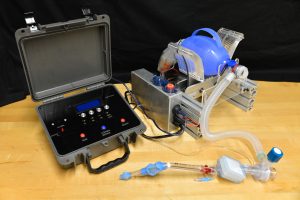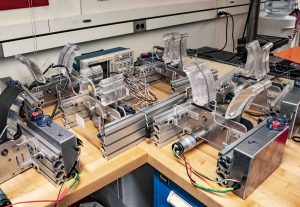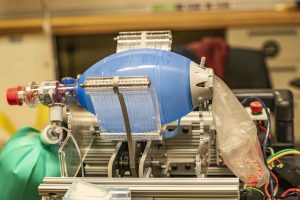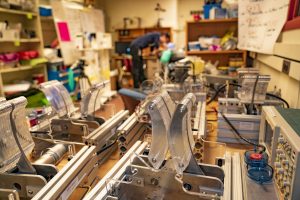MIT Emergency Ventilator
This project was started as a response to the COVID-19 crisis that began to spread in the United States in March 2002. Working from a 2010 student project in the MIT Medical Device design course, we hastily convened a volunteer team of clinicians, MIT researchers, students and alums to try and answer the question: Is it possible to safely ventilate a person by automatically actuating a manual resuscitator bag?
We decided to research and prototype as fast as we could and share our information publicly. Together, in four months we went from a concept to prototypes, to animal labs, to inspiring groups around the world to use our information and develop their own versions.
Visit the MIT Emergency Ventilator Project Site
 | Researchers rush to fill gap in ventilator supply One MIT team is working to find a low-cost solution to the shortage of ventilator machines during the COVID-19 pandemic. April, 10, 2020 |
| MIT-based team works on rapid deployment of open-source, low-cost ventilator David L. Chandler, March 26, 2020 | |
| MIT team races to fill Covid-19-related ventilator shortage David L. Chandler, April 20, 2020 |
Makers Musicales
A collaboration between the MIT Edgerton Center and the Fundación Mustakis in Recoleta, Santiago de Chile, we are co-developing a novel STEAM curriculum that blends understanding and playing music, physics and the hands-on fabrication of musical instruments. The curriculum was piloted in January and July 2019, with Chilean teenagers, and the evaluation and development ongoing. This project has received extensive media coverage in Chile and the attention of the Chilean Ministry of Science and the US Embassy, Santiago.
Makers Musicales del Campamento de Invierno 2019
Fundación Mustakis y MIT Presentan Makers Musicales
Healthcare Technology
Since undergraduate, my interest has focused on the application of technology to improve the human condition. Every one of the world’s 7.7 billion people needs healthcare. The challenges presented by the aims of providing higher quality, more efficient and accessible care offer rich, engaging opportunities for teaching, research and entrepreneurship.
Improving Surgeon’s Ergonomics
Improving surgeons’ ergonomics in the operating room to decrease fatigue and risk of injury. The physiological risks faced by medical professionals are often minimized, but awareness is increasing along with a concern regarding their effects on the care provided to patients. Two Master’s thesis supervised in collaboration with TU Delft, Netherlands. A new collaboration is starting with the STRATUS Center for Medical Simulation, Brigham and Women’s Hospital to prototype surgeons’ stress monitoring technologies.
Hardware Development to Support MEG Brain Imaging Studies
Working with Sumitomo Heavy Industries, Japan we are developing tools to provide audio and visual stimuli to test subjects inside a MEG (magnetoencephalography) machine. Unlike traditional MEG machines, this SHI’s system does not require a fully electromagnetically shielded room, rather the machine places the subject inside a tight, shielded tube, which requires all new hardware to be designed to insert/remove the subject and interact with them in order to conduct clinical studies.
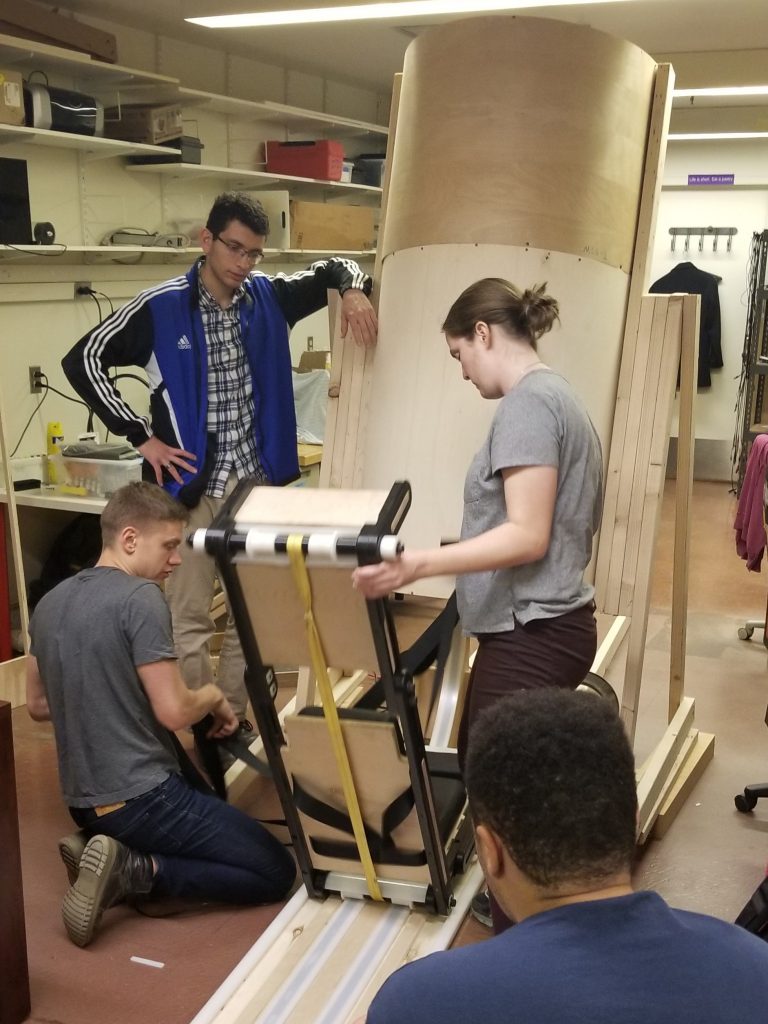
sliding chair to position subjects inside MEG 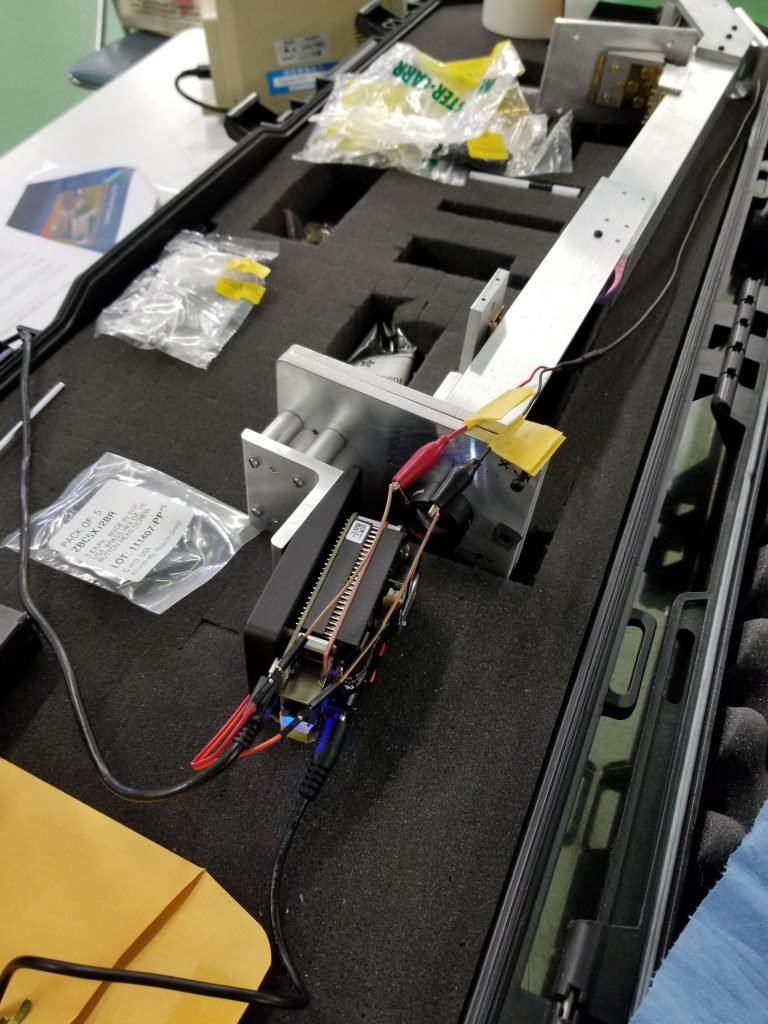
projector to display visual input inside MEG 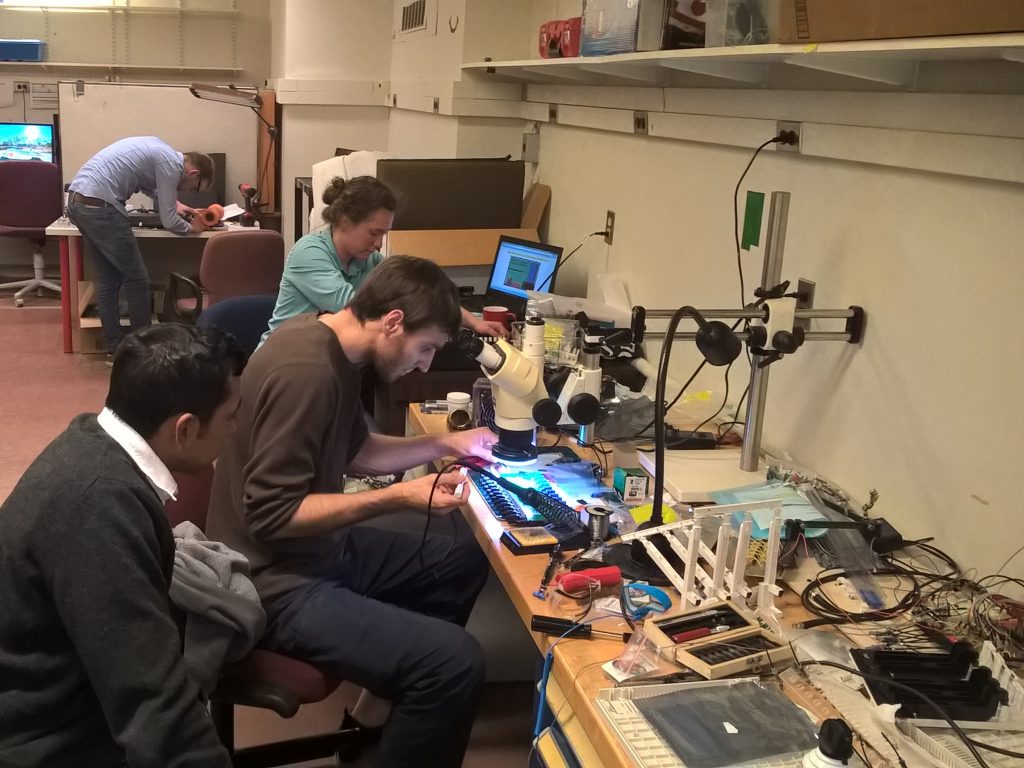
MEG compatible piano team working 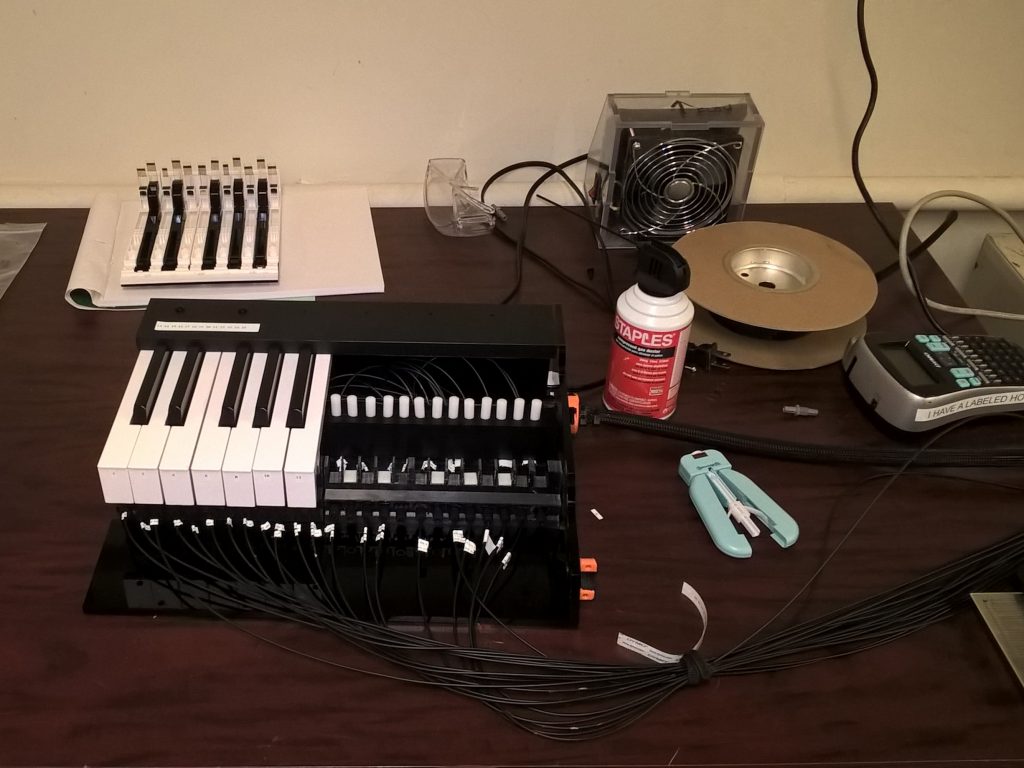
open MEG compatible piano showing custom fiber optics and sensors 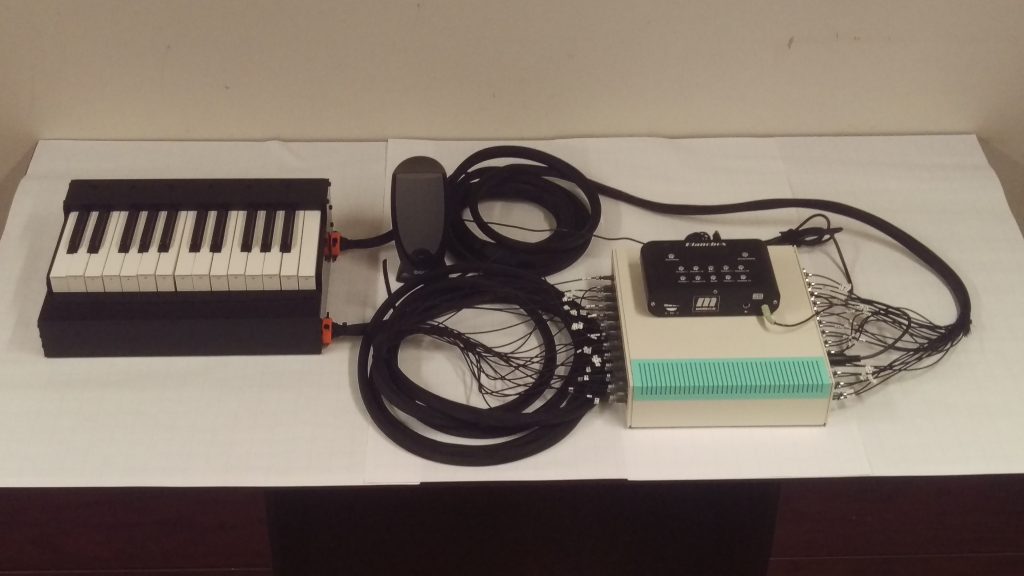
MEG compatible piano
Non-invasive Diagnostics
Multi-wavelength imaging of the Tympanic Membrane and middle ear to improve diagnostic accuracy for middle ear infection (otitis media), with the goal of enabling clinicians to more judiciously prescribe antibiotics. An MS thesis project is commencing Spring 2019, with the option to file IP around the technology.

